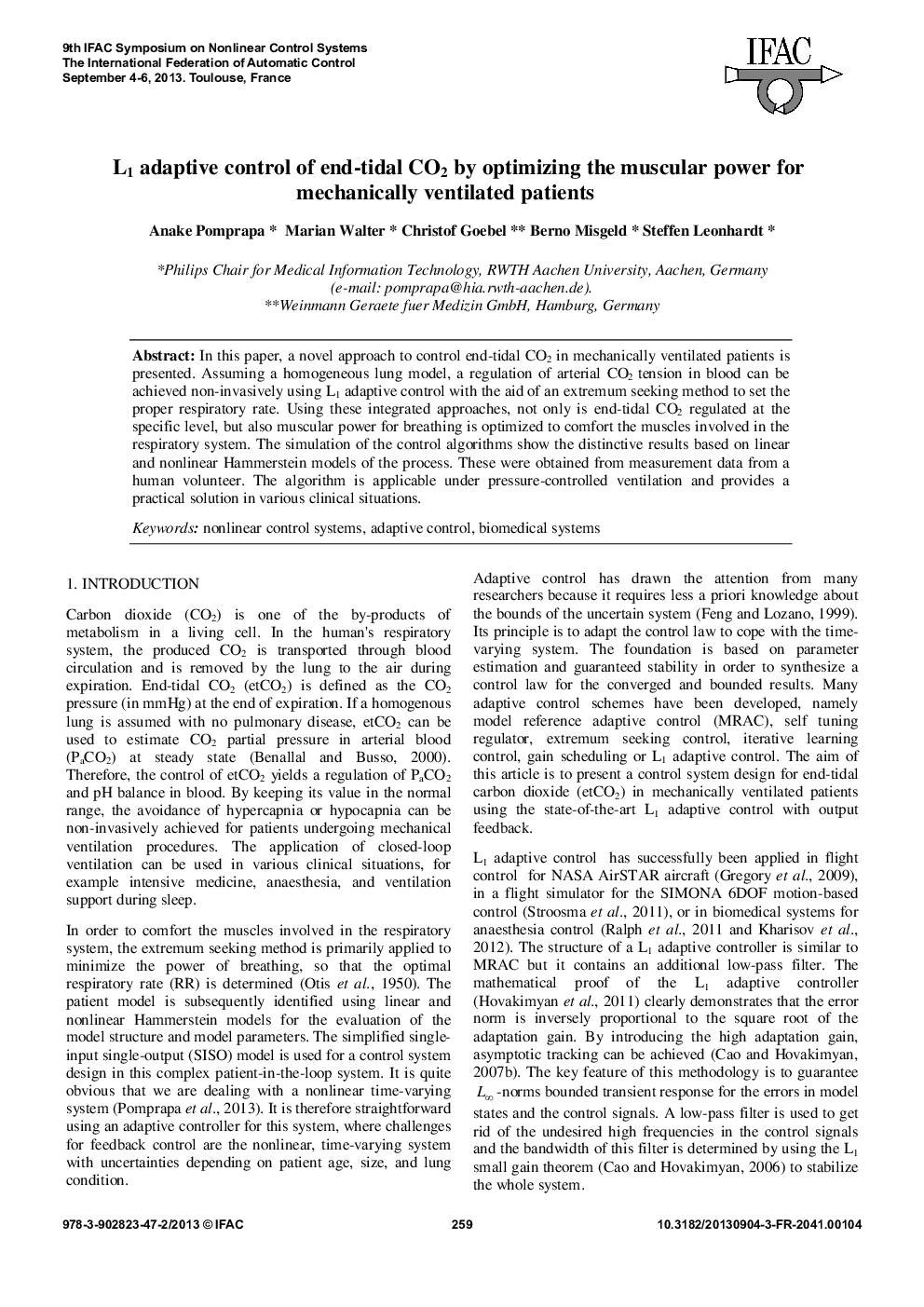| Article ID | Journal | Published Year | Pages | File Type |
|---|---|---|---|---|
| 714468 | IFAC Proceedings Volumes | 2013 | 6 Pages |
In this paper, a novel approach to control end-tidal CO2 in mechanically ventilated patients is presented. Assuming a homogeneous lung model, a regulation of arterial CO2 tension in blood can be achieved non-invasively using L1 adaptive control with the aid of an extremum seeking method to set the proper respiratory rate. Using these integrated approaches, not only is end-tidal CO2 regulated at the specific level, but also muscular power for breathing is optimized to comfort the muscles involved in the respiratory system. The simulation of the control algorithms show the distinctive results based on linear and nonlinear Hammer stein models of the process. These were obtained from measurement data from a human volunteer. The algorithm is applicable under pressure-controlled ventilation and provides a practical solution in various clinical situations.
